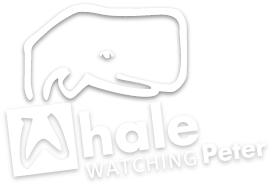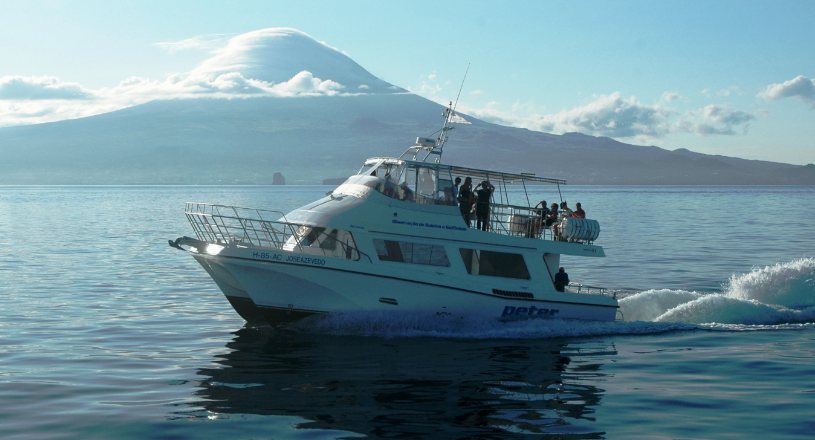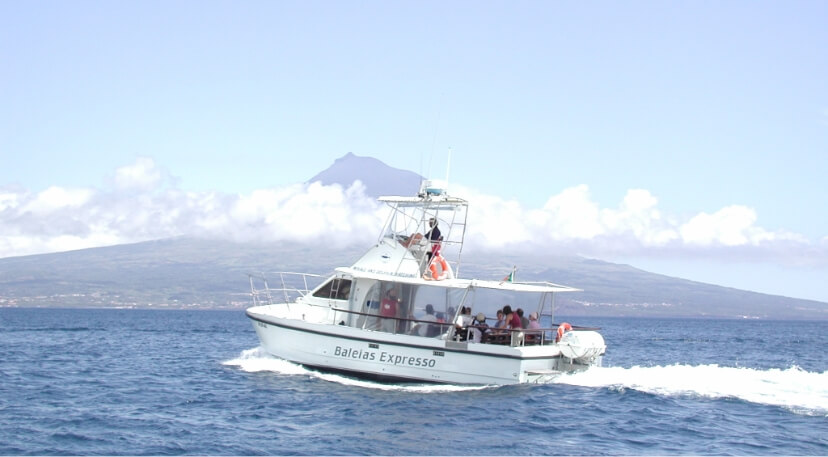Boat
José Azevedo
- 13 meters length
- 5.30 meters wide
- 45 people
- 2 wc

Base Peter Zee is the starting point for all tours. Before the adventure begins, there is a small briefing to clarify some of the most frequently asked questions, particularly about cetaceans, safety rules or even the Azores sea
The Azores are one of the 10 best world destinations for Whale Watching "
Known for their diversity of sizes and shapes, as well as for their different effects, the cetacean songs whistle, moan or chirp as they cross wide variations of the ocean. This is precisely where the Azores Archipelago comes in.















































• Do not exceed the speed of movement of the animals by more than 2 knots, keeping constant
• Vessels must move parallel to each other, positioning themselves in a sector of 60º to the rear of the animals
• Avoid changes of direction and direction in the direction of vessels
• Keep a parallel and slightly rearward direction of the animals so that they have a 180º free field in front of them
• Avoid noise in the vicinity of animals that disturb or attract them
• When the observation time has elapsed or whenever the animals show signs of disturbance, the vessels must move beyond the approach area by the rear of the animals
• Prohibited to approach less than 50 m from any cetacean
• Boats are not allowed to remain within a radius of 500 m around the animal or group of animals that are immobile at rest or in labor
• Forbidden to cause the separation of animals in groups, especially the isolation of young
• Prohibition of approaching whales when alone on the surface, as well as approaching whales with small calves, less than 100 m
• It is forbidden to stay more than 3 vessels within a radius of 300 m in the presence of dolphins and 500 m in the presence of whales
• Forbidden to observe for more than 30 minutes, evenly distributed
• Prohibited approaching sailing vessels without using an engine
• Forbidden to use sonar, even outside the observation area
• Prohibited the use of motor vehicles traveling underwater, in the area of the approach of cetaceans
• Forbidden to chase cetaceans
• Forbidden to feed animals
• Whale swimming prohibited
• Forbidden to pollute the sea with solid or liquid waste


This online platform combines tourism and science. During the trips, our marine biologist guides collect information about the sightings (position, behaviour, numbers, species etc). The objective of this long-term database is to contribute at the better understanding of the cetaceans in the Azores.

This citizen science photo-identification project engages people to identify individual marine mammals, for fun and for science. The guides on board and clients can submit the pictures of the sperm whale flukes that they took during the trip on www.happywhale.com and can track them around the globe.

This project aims to evaluate the impact of whale watching activity on sperm whales’s behavior. For this Peter Whale Watching and other partner enterprises provide a set of information about its daily activity and sighted animals.
Base Peter Zee is compromised with the conservation of the oceans and its inhabitants: besides educational and scientific talks, other pedagogic initiatives, our whale watching activity has been investing in the photo-identification of whales:
One of the techniques to study the sperm whales is through the photo-identification of the individuals; this consists in obtaining a photograph of the underside of its fluke. The border is different from every adult individual (as fingerprints in humans), so we use it as a distinctive characteristic. Once those flukes are compared and animals re-sighted, this provides useful information that allows scientist to know more about their population numbers, behaviours, migration patterns, birth rates and much more. Here you can find attached our sperm whale (Physeter microcephalus) photo-identification Catalogue

Do you have legal drinking age?
